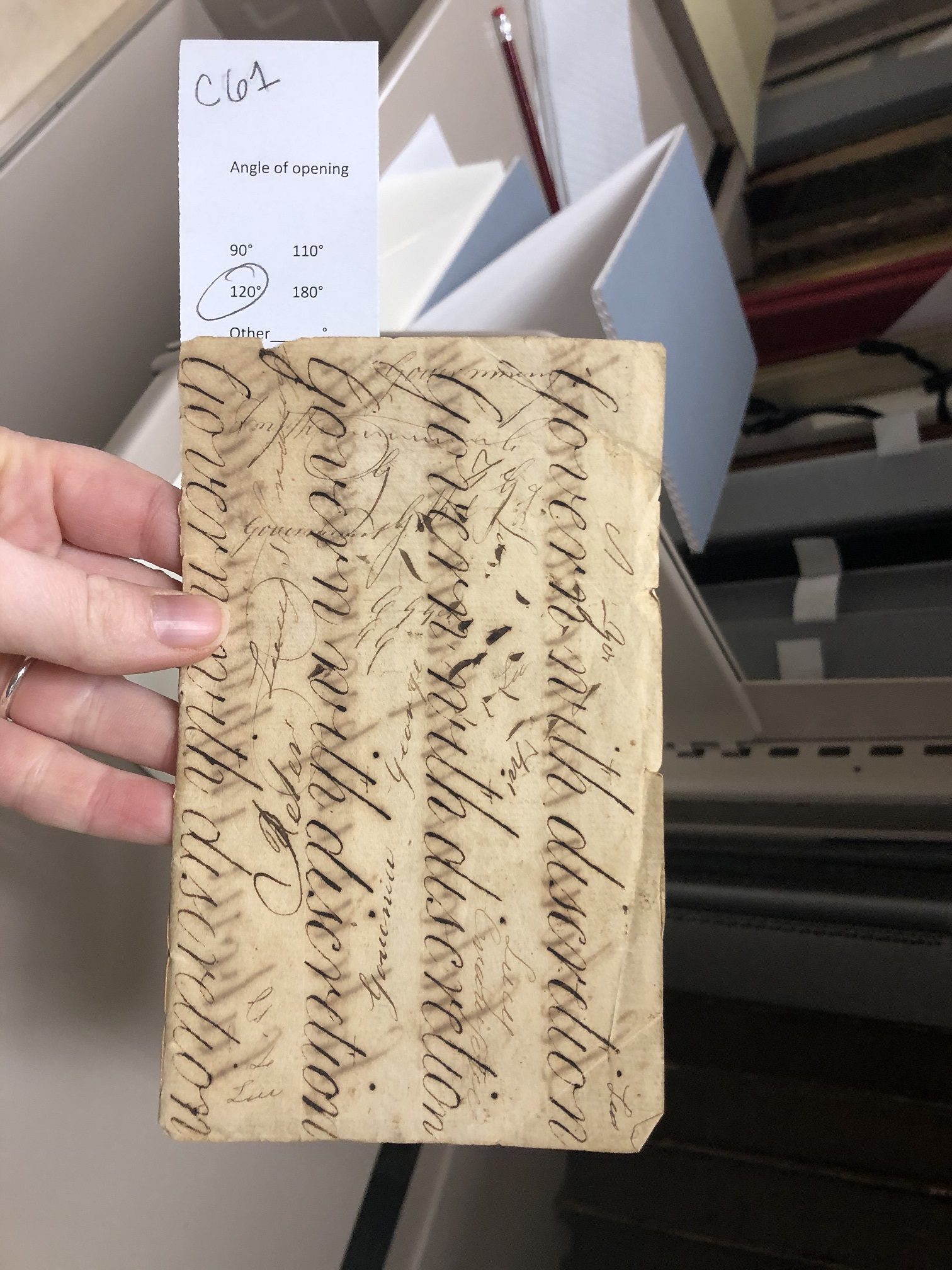Most library visitors to the Folger expect us to have books in our collections. Some know that we also have art, manuscripts, and even objects. Yet, any exploration into our collections means that researchers will inevitably encounter an item that could be described as including printed, manuscript, and even artistic content, all in one. Heather Wolfe has eloquently described such “hybrid” materials as “consist[ing] of a mixture of thematically-connected printed, manuscript, and graphic material gathered from a variety of sources into a single binding.” These items are of course not always bound, but in the instance of our prompt book collection, they usually are.
We have covered prompt books before in the Collation (you can read former Folger cataloger Sarah Hovde’s piece on a prompt book “in disguise”). We also have our Shakespeare promptbooks digitally available through the Adam Matthew’s Shakespeare in Performance subscription collection, as well as a select number available digitally through Luna. Finally, we describe the collection in detail on Folgerpedia, our external wiki. Prompt books are typically defined as “play texts marked up prior to performance in order to indicate for the stage prompter the cuts, changes, additions, entrances and exits, and other stage business they are to follow in conducting the performance.” Although more recently these usually take the form of a three-ring binder with tabs and other organizational features, prompt books from the eighteenth and nineteenth centuries can look quite different, both from prompt books today and from each other—they vary widely in shape, size, color, and decoration.
Due to the inclusion of different kinds of materials of varying fragility in prompt books, and the heavy use that most of them sustained, a lot of items in our collection are not in the best condition. The majority have been microfilmed, and the Shakespeare prompt books have mostly been digitized, which is good for content accessibility, but this also means that a large portion of this collection needs serious stabilizing treatment before researchers can see them in person.
During an attempt to survey our collection for treatment needs over the last few years, I took many photographs of promptbook coverings. I was struck by the creativity and variety that went into these objects, some of which were either imagined as or became keepsakes, in addition to being used for theatrical purposes. Although specific prompt book collections have been described by scholars of theatrical and book history, there seems to have been relatively little focus on the coverings used, and how these objects are made into items that are both useful, beautiful, and commemorative of a particular moment in the history of a particular theatrical production. One of the questions we should answer in thinking about prompt book coverings is whether a broad comparison is useful at all—if they’re so completely unique, what could a comparative study of such coverings tell us?
I think that it would be interesting to see how they were fashioned for use and/or commemoration (or decoration), and what the line is between determining those intents; to look at how the designs played on or with the themes or nature of the productions themselves, and whether or not the focus of the covering related to the specific production, an actor, or something else entirely. Some seem by contrast to just be created out of whatever was handy, for very utilitarian purposes. Others have been covered in ways that point to their being part of a larger collection of an individual’s prompt books. Since many prompt books in the Folger collection retain their original coverings, the possibilities seem particularly rich and interesting.
Here are a few of the prompt books I photographed that I was particularly taken with when engaging in surveys alongside then-Folger conservation intern Austin Plann Curley (now a conservator at the Huntington Library in California). When we have our collections on site again, the survey will continue, and hopefully these beautiful and interesting pieces of theatrical history will be accessible for research such as this.
(Click on each image above for a larger view)
Stay connected
Enter your email address to follow this blog and receive notifications of new posts by email.













